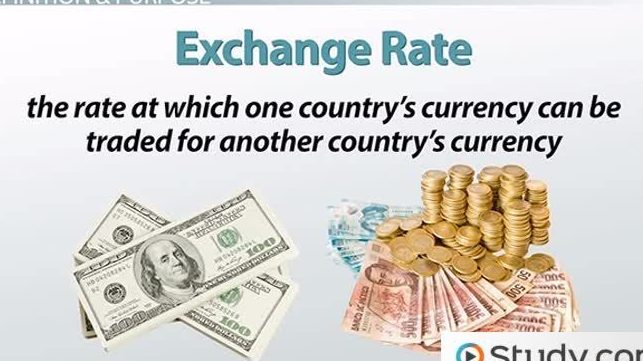Exchange rates play a crucial role in the global economy, influencing everything from international trade to investment decisions. Understanding how exchange rates are determined can help individuals and businesses navigate the complexities of the foreign exchange market. This article explores the key factors and mechanisms behind exchange rate determination.
What is an Exchange Rate?
An exchange rate is the value at which one currency can be exchanged for another. It determines how much of one currency you need to purchase a unit of another currency. Exchange rates are essential for international transactions, travel, and investment. They can be influenced by various factors, including:
- Currency Value: The exchange rate reflects the relative value of one currency compared to another. For example, if the exchange rate between the US Dollar (USD) and the Euro (EUR) is 1.2, it means 1 USD can be exchanged for 1.2 EUR.
- Currency Pairs: Exchange rates are typically quoted in currency pairs, such as USD/EUR or GBP/JPY. The first currency in the pair is the base currency, and the second is the quote currency.
Determinants of Exchange Rates
Several factors influence the determination of exchange rates, each impacting the value of currencies differently:
- Supply and Demand: The most fundamental factor affecting exchange rates is the supply and demand for different currencies. When demand for a currency increases relative to its supply, its value tends to rise. Conversely, when demand decreases, its value falls.
- Interest Rates: Central banks set interest rates, which can influence currency values. Higher interest rates attract foreign investment, increasing demand for the currency and causing its value to rise. Lower interest rates can have the opposite effect, reducing demand and lowering the currency’s value.
- Inflation Rates: Inflation rates affect exchange rates through their impact on purchasing power. Generally, currencies from countries with lower inflation rates tend to appreciate relative to those with higher inflation rates. Lower inflation helps maintain a currency’s purchasing power.
- Economic Indicators: Economic indicators such as GDP growth, unemployment rates, and trade balances provide insights into a country’s economic health. Strong economic performance can boost investor confidence and increase demand for a country’s currency.
- Political Stability: Political stability and governance can influence investor confidence and, consequently, exchange rates. Countries with stable political environments are often seen as safer investments, leading to stronger currencies.
- Market Sentiment: Currency values can be affected by market sentiment and speculative activity. Traders’ perceptions of future economic conditions, geopolitical events, and other factors can drive fluctuations in exchange rates.
Exchange Rate Regimes
Different countries use various exchange rate regimes to manage their currencies. These regimes determine how exchange rates are set and adjusted:
- Floating Exchange Rates: Under a floating exchange rate system, currency values are determined by market forces without direct government intervention. Supply and demand in the foreign exchange market drive fluctuations in exchange rates. Most major currencies, such as the USD and EUR, follow a floating exchange rate system.
- Fixed Exchange Rates: In a fixed exchange rate system, a country’s currency value is pegged to another currency or a basket of currencies. The central bank maintains this fixed rate by buying or selling currencies in the foreign exchange market. Fixed exchange rates provide stability but require significant reserves to maintain.
- Managed Float (Dirty Float): A managed float, or dirty float, is a hybrid system where a currency’s value is primarily determined by market forces but can be influenced by central bank interventions. Central banks may occasionally buy or sell currencies to stabilize exchange rates or achieve specific economic goals.
- Pegged Float: In a pegged float system, a country’s currency is pegged to a basket of currencies or a specific currency but allowed to fluctuate within a certain range. The central bank intervenes if the currency moves outside the predefined range to maintain stability.
Impact of Exchange Rates on the Economy
Exchange rates have significant implications for the economy and international trade:
- Trade Balance: Exchange rate fluctuations affect the competitiveness of a country’s exports and imports. A stronger currency can make exports more expensive and imports cheaper, potentially leading to trade deficits. Conversely, a weaker currency can boost exports and increase trade surpluses.
- Inflation and Interest Rates: Exchange rate movements can influence inflation and interest rates. A depreciating currency can lead to higher import prices, contributing to inflation. Central banks may adjust interest rates in response to exchange rate changes to manage inflation and economic stability.
- Foreign Investment: Exchange rates impact foreign investment decisions. Investors may seek currencies with higher returns or greater stability. Changes in exchange rates can affect the profitability of international investments and influence investment flows.
- Tourism and Travel: Exchange rate fluctuations can impact tourism and travel expenses. A stronger currency makes traveling abroad cheaper for residents, while a weaker currency can make international travel more expensive.
In conclusion, exchange rates are determined by a complex interplay of factors including supply and demand, interest rates, inflation, economic indicators, and political stability. Understanding these determinants can help individuals and businesses make informed decisions in the global market.

